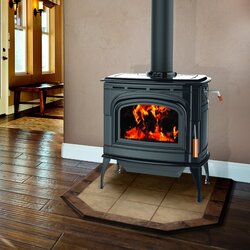Less than 1gm/hr in this testing.
Chris's presentation here. Chart that follows shows 85% after 9 years. Not sure, but I would guess this was with ceramic cats based on the date of presentation.
http://nficertified.org/admin/ExpoFiles/Neufeld EvaluatingCatalyticWoodStoves.pdf
Life of a Combustor
• The Anticipated Operational Life is Up to 10 Years
• Studies were Performed Independently by Omni Environmental Laboratories
• The Omni aging study conducted in December of Catalytic Hearth Coalition All Rights Reserved The Omni aging study conducted in December of 2009 Showed Limited Reduction in Activity After Multiple Seasons of Use
• All Combustors In the Study had a minimum of 3 cords burned each year
Chris's presentation here. Chart that follows shows 85% after 9 years. Not sure, but I would guess this was with ceramic cats based on the date of presentation.
http://nficertified.org/admin/ExpoFiles/Neufeld EvaluatingCatalyticWoodStoves.pdf
Life of a Combustor
• The Anticipated Operational Life is Up to 10 Years
• Studies were Performed Independently by Omni Environmental Laboratories
• The Omni aging study conducted in December of Catalytic Hearth Coalition All Rights Reserved The Omni aging study conducted in December of 2009 Showed Limited Reduction in Activity After Multiple Seasons of Use
• All Combustors In the Study had a minimum of 3 cords burned each year


